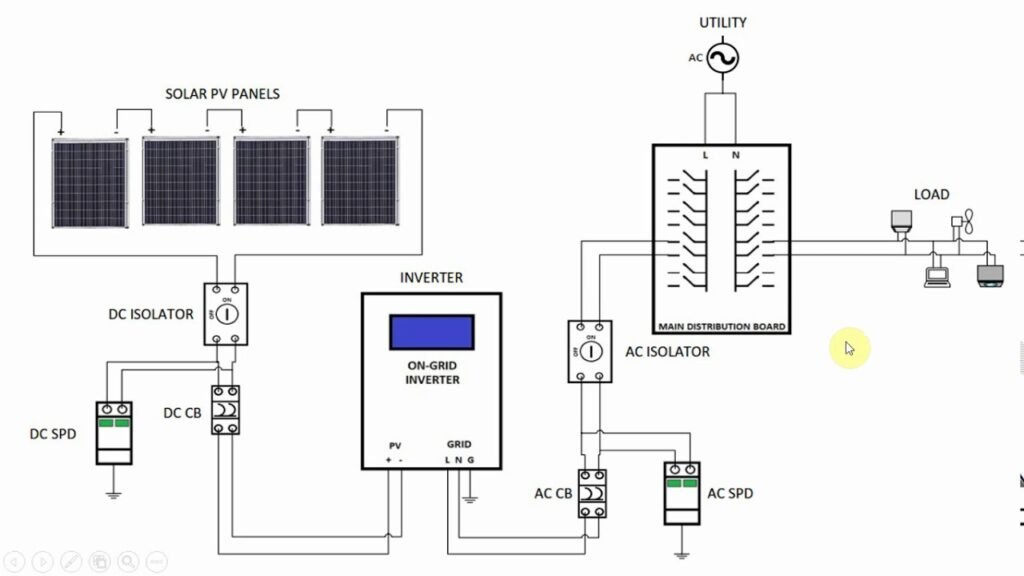
On-Grid Solar Energy System (Grid-Tied)
The On-Grid system is one of the most popular types of solar energy systems. It operates in parallel with the public electricity grid, allowing solar energy to be used directly to power electrical loads, with the ability to export excess energy to the grid. This system is ideal for areas with a stable power grid and is widely used in residential, commercial, and industrial areas.
How the System Works:
The system consists of solar panels, an inverter (to convert DC to AC), and a grid connection unit.
During the day, the panels generate electricity from sunlight.
The electricity is used directly to operate loads (residential or commercial).
Any surplus is exported to the public electricity grid.
At night or during low sunlight, electricity is drawn from the grid.
Advantages:
Lower cost: No need for batteries, reducing system cost by 30–40%.
High efficiency: Overall system efficiency can reach up to 85% due to reduced losses.
Sell electricity: Through the “Net Metering” mechanism.
Low maintenance: No need for regular battery maintenance.
Government incentives: Many countries offer financial and installation incentives.
Disadvantages:
The system completely shuts down if the grid power goes out, for safety reasons.
Electricity cannot be used during emergencies without a backup power source or batteries.
Completely dependent on grid stability.
Realistic Data and Figures (Average Example):
| Item | Typical Value |
|---|---|
| System Capacity | 5 kW |
| Average Daily Production | 20–25 kWh |
| Approximate Monthly Production | 600–750 kWh |
| Estimated System Cost | $3,000 – $5,000 |
| Financial Payback Period | 4 – 6 years |
| Panel Lifetime | 25 – 30 years |
| Inverter Efficiency | 95% – 98% |
| Annual Savings Rate | Up to 80% of electricity bill |
Simple Comparison: On-Grid vs. Off-Grid
| Criteria | On-Grid | Off-Grid |
|---|---|---|
| Grid Connection | Yes | No |
| Need for Batteries | No | Yes |
| Cost | Lower | Higher |
| Operates During Power Outage | No | Yes |
| Best Use Case | Cities and connected areas | Remote areas |
Conclusion:
The On-Grid system is a practical and economical choice for those living in areas with a stable electricity grid. Thanks to its high efficiency and low cost, it provides significant financial returns in the long term and is ideal for residential and commercial sectors seeking to reduce electricity bills and rely on clean energy sources.
